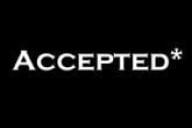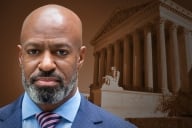You have /5 articles left.
Sign up for a free account or log in.

Istockphoto.com/Prostock Studio
The states that have banned affirmative action have seen the share of underrepresented minority students admitted to and enrolling in public universities go down. The trends are especially notable in that demographic trends have added to the supply of underrepresented minority students in the states.
These are the conclusions of a new study by Mark Long at the University of Washington and Nicole Bateman at the Brookings Institution, published Tuesday in Educational Evaluation and Policy Analysis, a journal of the American Educational Research Association.
The study explores the long-term impacts of the bans, which started in the late 1990s and continue to this day. Early bans were adopted in California, Florida and Washington, and later bans were adopted by Arizona, Georgia, Michigan, Nebraska, New Hampshire and Oklahoma. (Idaho joined the group last month but is not in the study.)
The study examined 19 public universities in the states that have banned affirmative action, and it examined enrollments through 2015.
Averaging across the 19 universities studied, in the year prior to the affirmative action ban, the share of underrepresented students (black, Latinx and Native American students) among enrolled U.S. students was 15.7 percentage points below these students’ share among high school graduates in the individual states where the universities are located. However, this gap rose to 16.8 percentage points, on average, in the year immediately after the ban, and the gap increased in subsequent years to 17.9 percentage points.
Among the nine flagship universities in the study, the underrepresentation gap grew from 11.2 percentage points to 13.9 percentage points immediately after the ban and to 14.3 percentage points by 2015.
For example, at the University of California, Berkeley, the underrepresentation gap before the ban on affirmative action was 14.9 percent. The year after, it grew to 24.9 percent, and in 2015 it hit 34.4 percent.
Within the University of California system, some campuses have smaller gaps. UC Riverside's is only 11.1 percent, but that is up from 9.3 percent when California enacted its ban. Also high was UC San Diego, at 33.1 percent, up from 26 percent the year after the ban.
The University of Michigan's ban has been constant at 8.1 percent. The University of Florida's gap is 18.9 percent, up from 17.5 percent right after the ban.
At the University of Washington, the gap was 7.6 percent in 2015 and 4.3 percent right after the ban. (Washington State's Legislature undid the ban last year, but the state's voters reimposed it.)
"Alternative policies and administrative decisions have, so far, been unable to fully replace race-based affirmative action," said Long, a professor of public policy and governance at the University of Washington.
“The very slow rate of progress in these underlying conditions is surprising and concerning."
He noted that if the past 20 years is a guide, it will take more than 1,000 years for the black-white gap in household income to close.
"It’s clear that university leaders and state policy makers cannot rely on improvements in the underlying conditions to solve underrepresentation in higher education for many decades to come," he said.
Richard D. Kahlenberg, a senior fellow at the Century Foundation and a critic of affirmative action, did not dispute the numbers in the report but said that they did not point to the need to restore affirmative action.
States could have adopted class-based affirmative action, he said. "Had universities employed wealth, as well as income, in their socioeconomic affirmative action programs, they would have achieved higher levels of racial diversity than they did," he said.








